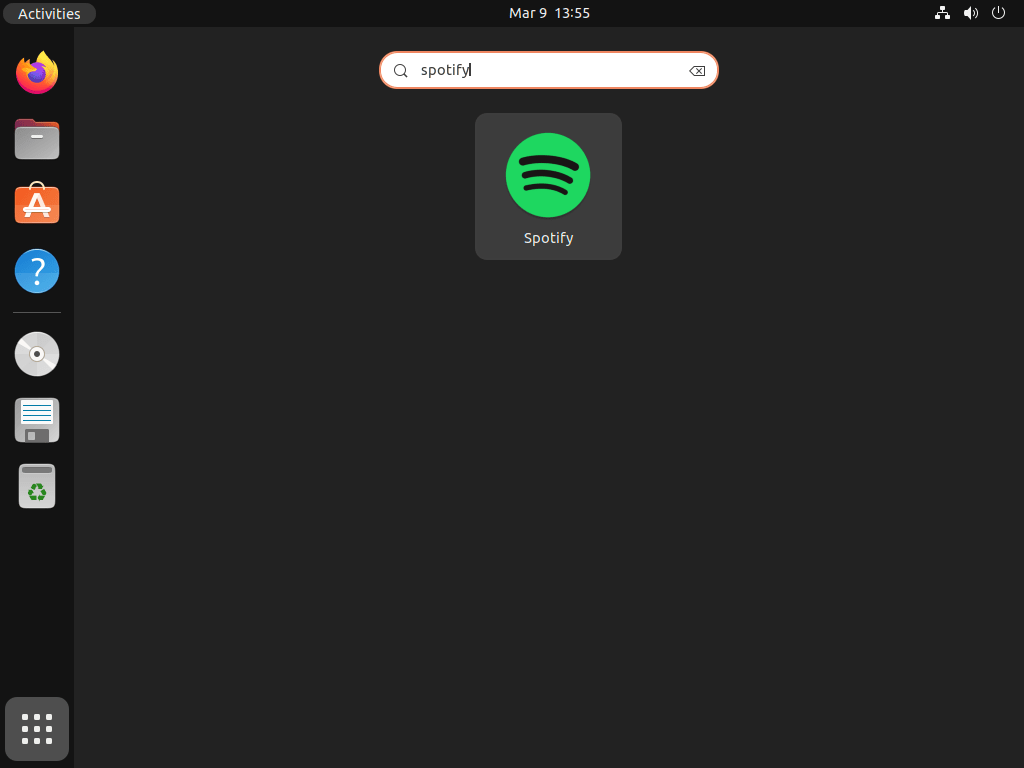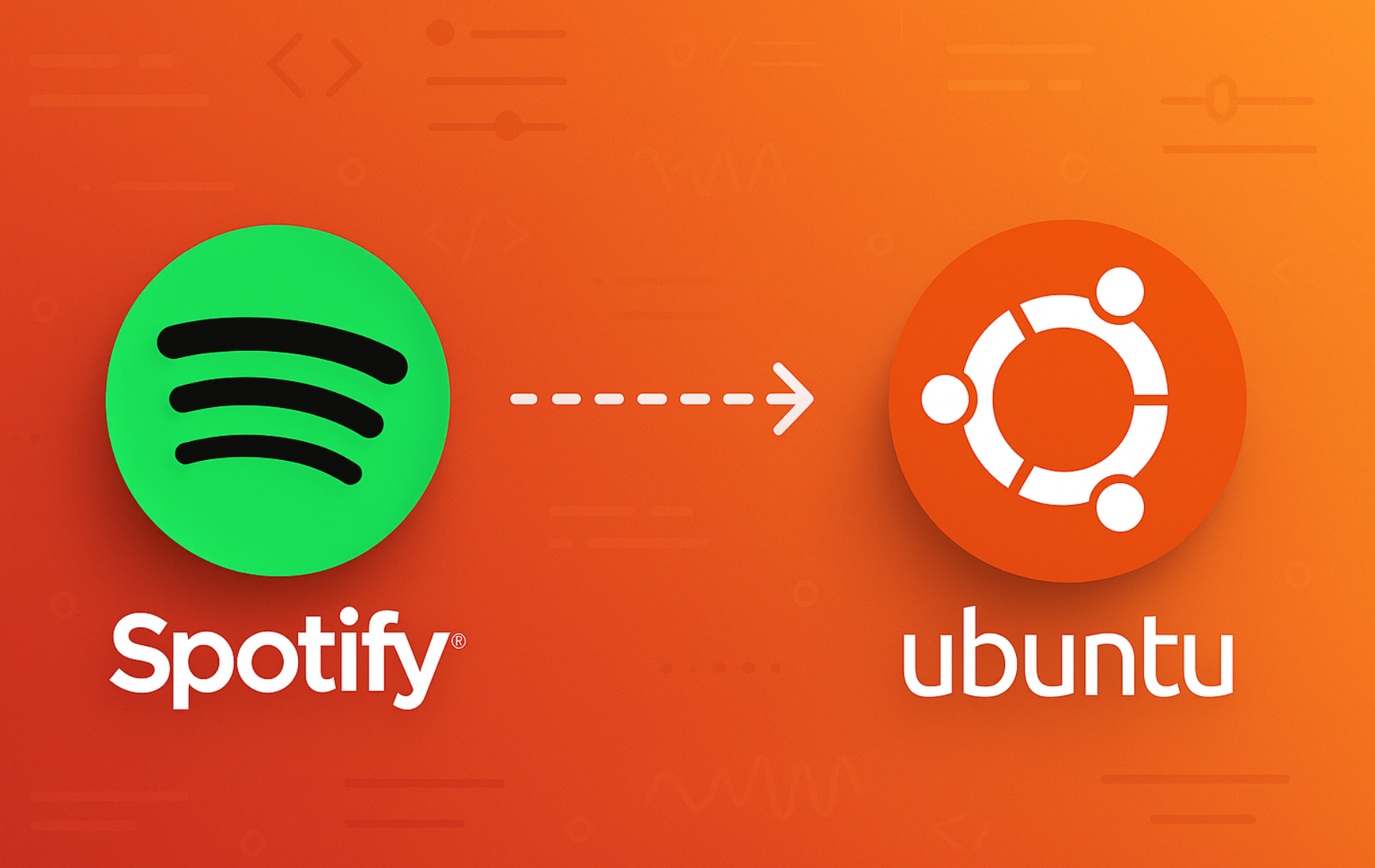Spotify provides access to millions of songs, podcasts, and audiobooks through a native Linux desktop client. Whether you want to stream your favorite playlists while working, discover new music through personalized recommendations, or download content for offline listening during commutes, the Spotify desktop app integrates seamlessly with Ubuntu’s application menu and notification system. By the end of this guide, you will have Spotify installed and running on your Ubuntu system using your preferred installation method.
Choose Your Spotify Installation Method
Generally, Ubuntu offers multiple ways to install the Spotify desktop client, each with different trade-offs for update frequency, isolation, and package management preferences.
| Method | Channel | Version | Updates | Best For |
|---|---|---|---|---|
| APT (Official Repo) | Spotify Repository | Latest stable | Automatic via apt upgrade | Most users who prefer native package management |
| Flatpak | Flathub | Latest stable | Automatic via flatpak update | Users who want sandboxed apps or run multiple distros |
| Snap | Snapcraft | Latest stable | Automatic background updates | Users who prefer Ubuntu’s default universal package format |
For most users, the APT method is recommended because it integrates with Ubuntu’s native package manager, uses minimal disk space, and receives updates through the standard system upgrade process.
The Spotify repository uses a universal package format that works on all current Ubuntu releases, including LTS versions and interim releases. Commands shown in this guide work identically regardless of your specific Ubuntu version.
Install Spotify with APT
Primarily, the APT method uses Spotify’s official Debian repository, which provides automatic updates through your system’s package manager.
Update Ubuntu System Packages
First, ensure your system packages are current to avoid dependency conflicts during installation:
sudo apt update && sudo apt upgradeInstall Required Dependencies
Next, install the packages needed for downloading and verifying the Spotify repository:
sudo apt install curl gnupgImport Spotify GPG Key
First, download and install Spotify’s GPG signing key to verify package authenticity:
curl -fsSL https://download.spotify.com/debian/pubkey_5384CE82BA52C83A.asc | gpg --dearmor | sudo tee /usr/share/keyrings/spotify-archive-keyring.gpg > /dev/nullAdd Spotify Repository
Next, configure the official Spotify repository using the modern DEB822 format:
cat <<EOF | sudo tee /etc/apt/sources.list.d/spotify.sources
Types: deb
URIs: https://repository.spotify.com
Suites: stable
Components: non-free
Architectures: amd64
Signed-By: /usr/share/keyrings/spotify-archive-keyring.gpg
EOFInstall Spotify Client
After adding the source, refresh the package cache to include the newly added repository, then install Spotify:
sudo apt updateBefore proceeding, verify that APT recognizes the Spotify repository:
apt-cache policy spotify-clientFor instance, the expected output confirming the repository is configured:
spotify-client:
Installed: (none)
Candidate: 1:1.2.x.xxx
Version table:
1:1.2.x.xxx 500
500 https://repository.spotify.com stable/non-free amd64 Packages
Now install the Spotify client:
sudo apt install spotify-clientFinally, verify the installation completed successfully by checking the installed version:
apt-cache policy spotify-clientAs an example, the expected output confirming Spotify is installed:
spotify-client:
Installed: 1:1.2.77.xxx.xxxxxxxx
Candidate: 1:1.2.77.xxx.xxxxxxxx
Version table:
*** 1:1.2.77.xxx.xxxxxxxx 500
500 https://repository.spotify.com stable/non-free amd64 Packages
Install Spotify with Flatpak
Alternatively, Flatpak provides sandboxed application installation, keeping Spotify isolated from your system files while still integrating with your desktop environment.
Flatpak is not pre-installed on Ubuntu. If you have not set it up yet, install it with
sudo apt install flatpakand restart your session before continuing. For detailed setup including the Flathub repository, follow our Flatpak installation guide for Ubuntu.
Enable Flathub Repository
Since Flathub is the primary source for Flatpak applications, add it if not already configured. The --system flag installs the repository for all users on the machine:
sudo flatpak remote-add --if-not-exists --system flathub https://flathub.org/repo/flathub.flatpakrepoInstall Spotify from Flathub
With the repository enabled, install the Spotify client from Flathub. The -y flag automatically confirms the installation prompt:
sudo flatpak install --system flathub com.spotify.Client -yFinally, verify the installation completed successfully:
flatpak info --system com.spotify.ClientAs an example, the expected output confirming the installation:
Spotify - Online music streaming service
ID: com.spotify.Client
Ref: app/com.spotify.Client/x86_64/stable
Arch: x86_64
Branch: stable
Origin: flathub
Version: 1.2.x.xxx
Install Spotify with Snap
As another option, Snap is Ubuntu’s native universal package format, pre-installed on all standard Ubuntu installations. This method provides automatic background updates and application sandboxing.
Consequently, to install Spotify using Snap, run:
sudo snap install spotifySimilarly, the expected output confirming successful installation:
spotify 1.2.x.xxx from Spotify✓ installed
Verify the installation by listing installed snaps:
snap list | grep spotifyFor instance, the expected output showing the installed snap:
spotify 1.2.x.xxx xx latest/stable spotify✓ -
Launch Spotify
After installation, you can launch Spotify through the terminal or graphical application menu.
Launch from Terminal
Specifically, the launch command depends on which installation method you used:
APT installation:
spotifyFlatpak installation:
flatpak run com.spotify.ClientSnap installation:
snap run spotifyLaunch from Applications Menu
Additionally, Spotify integrates with Ubuntu’s GNOME desktop automatically. Click the Activities button in the top-left corner, type “Spotify” in the search bar, and click the Spotify icon to launch the application.


Remove Spotify
However, if you no longer need Spotify, use the removal method that matches your installation.
Remove APT Installation
To remove the APT version, uninstall the Spotify package and clean up orphaned dependencies:
sudo apt remove --purge spotify-client
sudo apt autoremoveFurthermore, if you do not plan to reinstall Spotify, remove the repository and GPG key:
sudo rm /etc/apt/sources.list.d/spotify.sources
sudo rm /usr/share/keyrings/spotify-archive-keyring.gpgAfter removing the repository files, refresh the package index and verify removal:
sudo apt update
apt-cache policy spotify-clientAs an example, the expected output confirming the repository is no longer available:
spotify-client: Installed: (none) Candidate: (none) Version table:
Remove Flatpak Installation
In contrast, for the Flatpak method, uninstall Spotify and remove its application data:
sudo flatpak uninstall --system --delete-data com.spotify.ClientOptionally, remove unused Flatpak runtimes to free disk space:
sudo flatpak uninstall --system --unusedRemove Snap Installation
Lastly, to remove the Spotify snap package, run:
sudo snap remove spotifyRemove User Data (All Methods)
Be aware that Spotify stores settings and cached data in your home directory. Therefore, remove these folders for a complete cleanup:
The following commands permanently delete your Spotify settings, cached music, and offline downloads. If you have playlists or preferences you want to preserve, export them through the Spotify app before proceeding.
APT or Snap installation:
rm -rf ~/.config/spotify ~/.cache/spotifyFlatpak installation:
rm -rf ~/.var/app/com.spotify.ClientConclusion
To summarize, you now have Spotify installed on Ubuntu using either the official APT repository, Flatpak from Flathub, or Snap. Notably, the APT method provides native integration with Ubuntu’s package management, while Flatpak and Snap offer sandboxed alternatives with automatic updates. Finally, if you encounter playback issues, check that your audio drivers are correctly configured and that no firewall rules block Spotify’s streaming connections.


